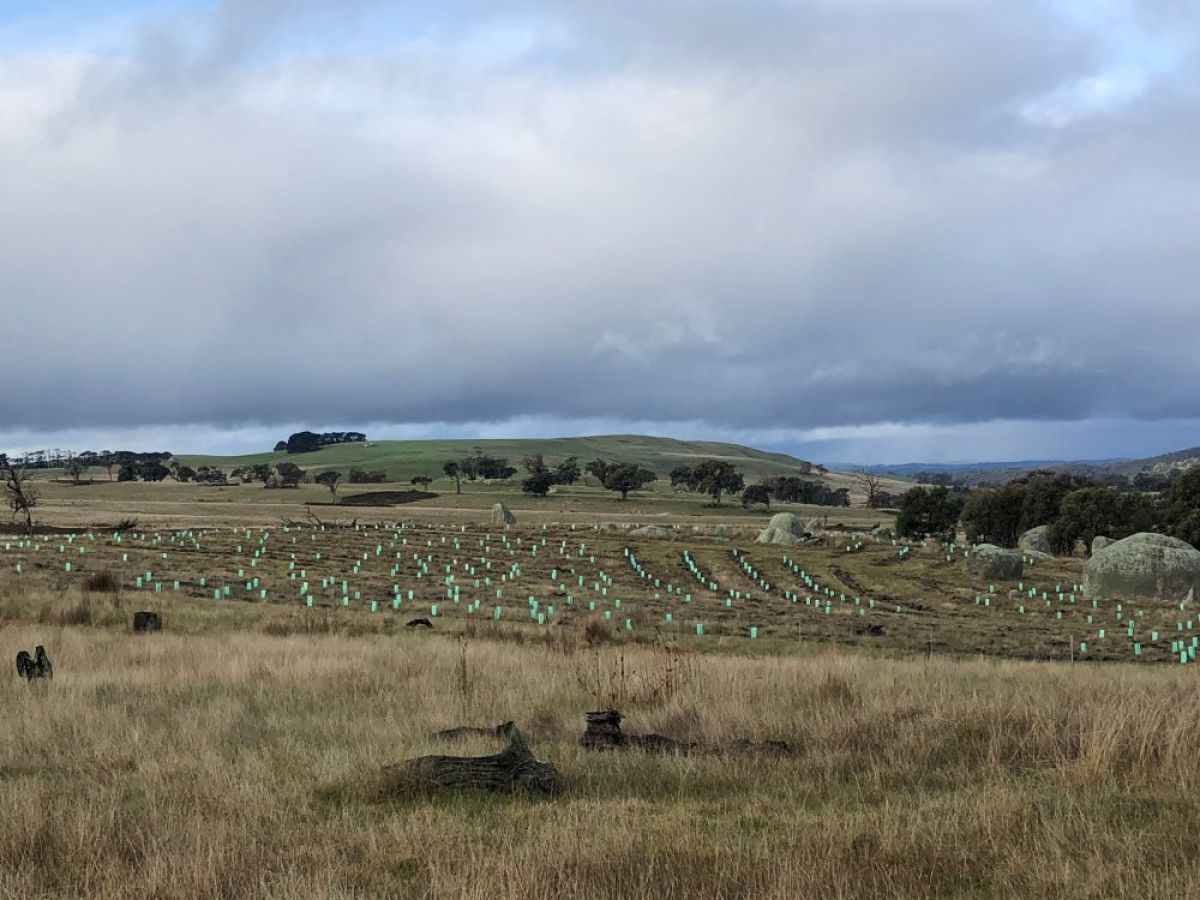Significant revegetation achievements
- 14,000 hectares revegetated since 2017 – over 20 times the size of Melbourne CBD.
- Revegetation benefits native species, reduces carbon emissions, controls erosion, and improves water quality.
- The Victorian Government is investing $30.9 million to revegetate and restore at least 20,000 hectares of native habitat across private land in Victoria.
- That's an area 10,000 times the size of the Melbourne Cricket Ground (MCG) that will be transformed into healthy habitat for native wildlife.
Improving habitat for woodland birds and animals through revegetation
Taking action to reconnect land and increase the quality of habitat for native plants and animals on the northern plains and slopes of Victoria.
Funded by our Biodiversity Response Planning program and led by Goulburn Broken Catchment Management Authority, revegetation was carried out between 2019 and 2022 in Box-Ironbark Forests to link up public and private land.
These landscapes had become fragmented due to land clearing for farming and introduced weeds and pests that destroy habitat and prey on native animals.
Improving corridors of vegetation helps the Regent Honeyeater, Swift Parrot, Squirrel Glider, Brush-tailed Phascogale, Grey-crowned Babbler and the listed threatened woodland bird community by providing uninterrupted habitat and food sources.
However, direct seeding and hand planting alone is not enough to protect these threatened species.
Rabbit, fox, goat and weed control was also undertaken to give new plantings the chance to thrive and stop predators from harming wildlife. These threats were managed across 13,600 hectares of private and public land.
To further support natural regeneration, fencing was installed to protect some areas from livestock grazing.
This coordinated approach was delivered collectively by state government agencies, farmers, Landcare, conservation and environmental volunteer groups, invasive species management specialists, Traditional Owners and local businesses.
These on-ground actions exceeded expectations by revegetating over 500 hectares of indigenous plants - five times the area initially planned.
Revegetation in Box-Ironbark Forests 2019–2022



Revegetation activities

Figure: 2017-22 cumulative activity data, revegetation
Revegetation
Target: 200,000 ha in Biodiversity 2037 priority locations by 2037
Table: Cumulative area (hectares) of revegetation since 2017 across Victoria for 2018-19 to 2021-22
| Cumulative progress* | 2018–19 | 2019–20 | 2020–21 | 2021–22 |
|---|---|---|---|---|
| Priority locations (ha) | 63 | 74 | 3,374^ | 3,695 |
| Other locations (ha) | 7,211 | 9,061 | 10,202 | 10,274 |
| Statewide total (ha) | 7,274 | 9,135 | 13,576 | 13,969 |
*These progress figures are a compilation of data from organisations across the environment sector. While the Victorian Government is a major contributor to this work, many of the projects from which this data is derived are undertaken by others.
^Increase in activity in priority locations from 2019-20 to 2020–21 partly due to change in method.
Recent program announcements will drive greater progress toward this revegetation target. These include the $77 million BushBank program, the $10 million Nature Fund and continued support for community-driven action including Landcare.
Page last updated: 13/08/24